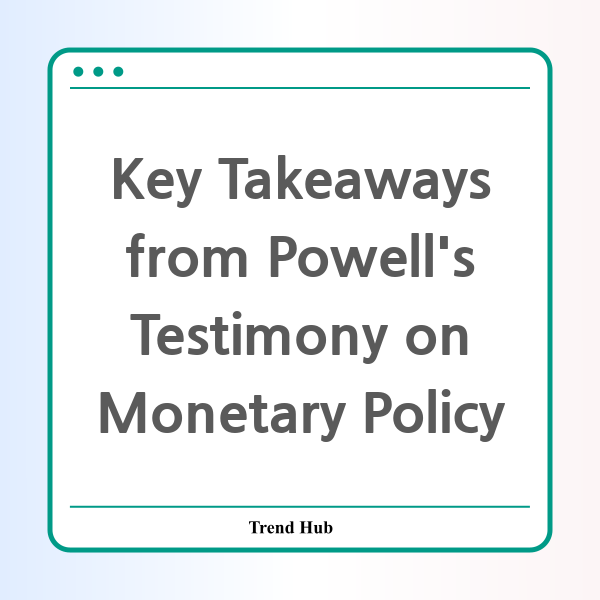* This website participates in the Amazon Affiliate Program and earns from qualifying purchases.

As Federal Reserve Chair Jerome Powell prepares to address Congress this week, many are eager to grasp how his insights on monetary policy will shape the economic landscape in the coming months. With inflation remaining a pressing issue for both lawmakers and citizens, Powell's testimony before the Senate Banking Committee is highly anticipated. Let's dive into what we can expect from his speeches and the implications for the economy.
On Tuesday at 10 a.m. ET, Powell will deliver his semiannual remarks in front of the Senate Banking Committee. During this session, he is expected to face a barrage of questions regarding his stance on inflation, interest rates, and the state of the economy. Following this critical session, Powell will continue his testimony on Wednesday before the House Financial Services Committee. These appearances are critical in shaping public perception and policy regarding the Federal Reserve's approach.
One of the key points Powell is likely to address is the Fed's current interest rate strategy. Following a one-percentage-point cut in the last year, the Fed is in a position of cautious observation, suggesting that there is "no hurry" to make further adjustments to interest rates at this time. This appears to be a well-thought-out strategy, as the economy remains strong with a robust job market, providing the Fed enough leeway to refrain from immediate changes.
Furthermore, Powell is poised to discuss the potential economic impacts of current political policies, particularly those initiated during the Trump administration. Notably, the ongoing debates surrounding tariffs on steel and aluminum have raised concerns about inflation. While Powell has kept his cards close to his chest regarding these tariffs, it is evident that they could disrupt the delicate balance the Fed is trying to maintain.
Inflation continues to loom as a significant concern for the Fed, as it challenges the central bank's 2% target. In his upcoming speeches, Powell should emphasize how the Fed is prepared to handle these risks and uncertainties, with a straightforward approach that reflects their commitment to stability in the economy.
As we await Powell's remarks, economists and market analysts are already weighing in on the implications of his expected comments. The consensus seems to be shifting towards a scenario where additional interest rate cuts are less likely, with predictions indicating only one potential cut by 2025.
Given the sustained labor market and inflationary pressures, Powell’s testimony will provide insights that could influence the Federal Reserve's strategy moving forward. By taking a measured approach, the Fed demonstrates its commitment to navigating the complexities of the current economic environment carefully.
The outcome of Powell's testimony could have lasting implications for individuals and businesses alike. Stakeholders should stay tuned for updates as Powell engages with Congress, as the discussions not only reflect the current state of the economy but also set the tone for future policies and economic health.
* This website participates in the Amazon Affiliate Program and earns from qualifying purchases.